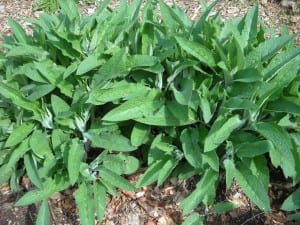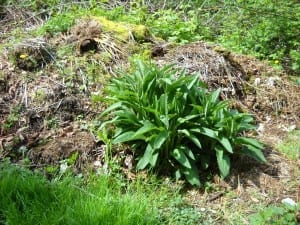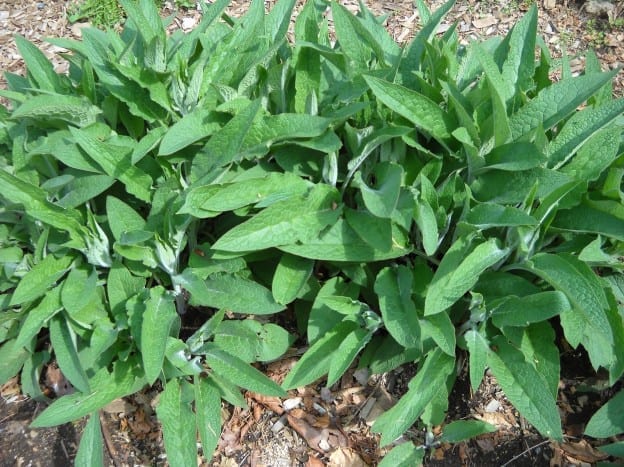The comfrey in Jean’s garden is coming along quickly . Soon the stems which hold the blooms will rise up amongst the leaves adding colourful flowers to the blooming landscape. Comfrey flowers come in shades ranging from white through to purple.
. Soon the stems which hold the blooms will rise up amongst the leaves adding colourful flowers to the blooming landscape. Comfrey flowers come in shades ranging from white through to purple.
This nitrogen loving member of the borage family lives best in moist soil. Some varieties can have issues with rust usually as a result of lack of water.
Comfrey can be propagated by transplanting portions of the root structure. Ensure transplants have plenty of manure or compost for a good start and water well. Do not cut the first year, giving the plant time to establish itself. Make sure you want it as comfrey is not as easy to get rid of once the roots are feeling happily at home.
Using gloves when harvesting the leaves, which can be done up to five times a year and before mid autumn, will protect you from the small hairs on the leaves which can irritate the skin.
 Like clover, comfrey has deep roots that bring nutrients up from the soil, filling their leaves with all sorts of good things for your garden. The leaves can be used to create an excellent organic liquid food that Jean’s plants love. For the full instructions take a look here.
Like clover, comfrey has deep roots that bring nutrients up from the soil, filling their leaves with all sorts of good things for your garden. The leaves can be used to create an excellent organic liquid food that Jean’s plants love. For the full instructions take a look here.
Comfrey is a dynamic compost accelerator. Mixing leaves in with other compost and garden trimming will help the organic matter to breakdown much more quickly. The leaves also make a golden yellow fabric dye.
Comfrey is not without controversy and many countries ban any prepared products that contain comfrey. Traditionally comfrey has a reputation for aiding in the healing of bones so it is not surprising that it was also known as boneset and knitbone. A poultice or cream made with comfrey assists in the reduction of swelling, soothing, sprains and strains but is not recommended for open wounds.
The concern comes from the use of comfrey internally. Although the plant contains the highest levels of protein, second only to soy it also has compounds that can be toxic to the liver. There is a global history of comfrey teas, soups and usage as a substitute for spinach. Please do your due diligence before deciding if including comfrey in your diet is right for you.
Herb-info.com has a full page on the popular and esoteric aspects of comfrey. Check it out!
Okay so now it is your turn. Click back one page to Facebook and share your thoughts, ideas and stories on how you use this power packed herb.
.


